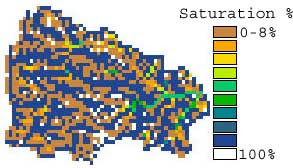A basic knowledge on computational programming is a very important resource for the modelling of natural systems. Following the entry on the "Water Tohoku: Tutorials" in reference to C programming and GCM data retrieving, in the current entry I cite and shortly review some tools useful for viewing and editing of large multidimensional matrices.
Why do we need to deal with large matrices?
